After the Silverado, Blue Ridge, and Bond Fires in 2020 that burned over 27,000 acres combined and severely damaged parts of Orange County, talks began within Orange County Fire Authority (OCFA) and specifically amongst air operations personnel about how the county was going to deal with fires of that magnitude within the county or fires of an even bigger scale that could cause serious risk and a much larger damage scale than previous fires as wildfires steadily escalate in severity in California.
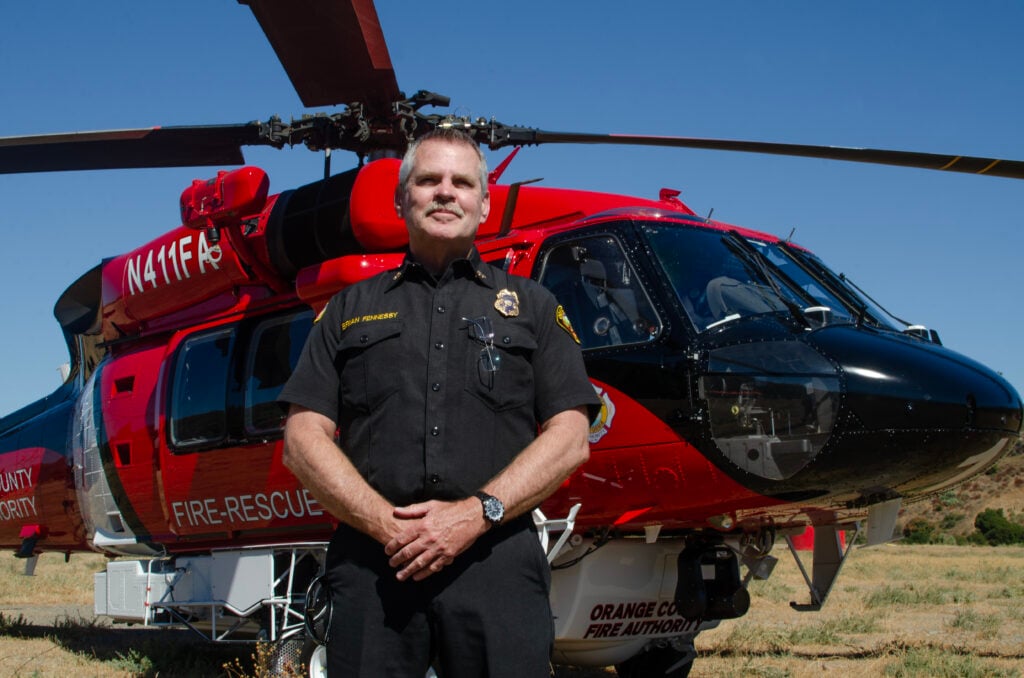
Shortly after the arrival of a new, well-regarded chief, Chief Brian Fennessy (formerly the Fire Chief of San Diego Fire & Rescue), along with air operations members and command staff, soon began planning the long-term future of the air unit. After two of the agency's super Hueys were retired in 2021, the agency was left with just two helicopters—both Bell 412 EPs purchased in 2009.
OCFA air operations staff began planning the unit's next generation of aircraft in early 2021. The unit opted for the Sikorsky S-70 model, which the Los Angeles County Fire Department initially made successful as an aerial firefighting aircraft.
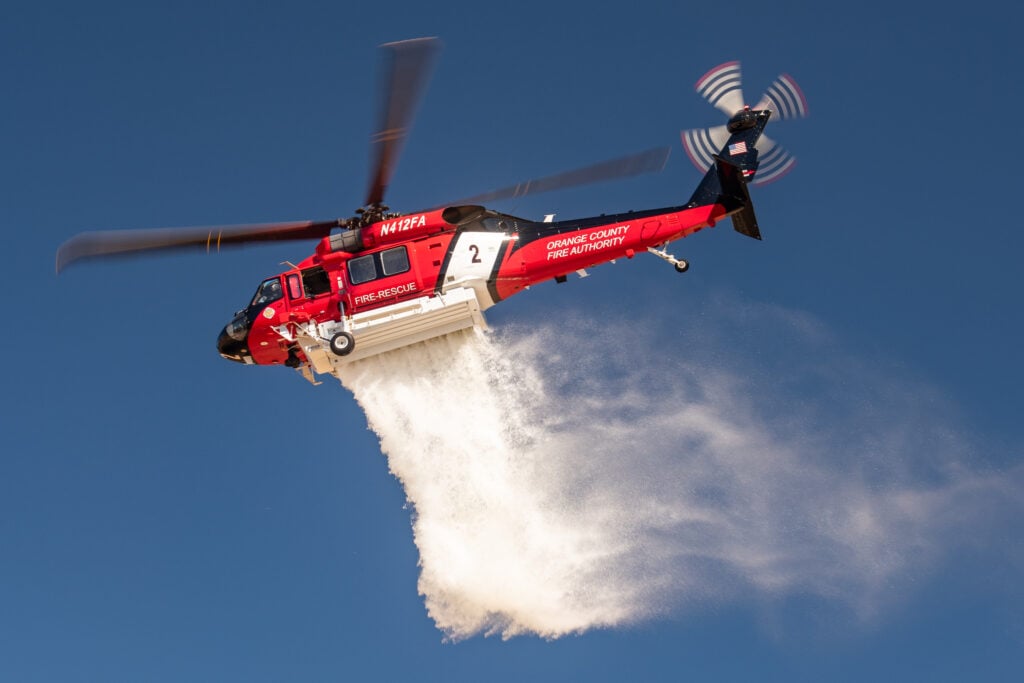
United Rotorcraft, which holds the type certificate for the S-70 Firehawk, was engaged early in the project as unit staff began planning out their purchase of two identical aircraft, signing for the purchase agreement in November of 2022, with the aircraft arriving in Orange County on June 22, 2024, when intensive crew training was carried out before their eventual entry into service on August 19, 2024.
Pilots
Unlike some agencies and with the complexity of the systems of the first S-70M, pilots for OCFA are sourced from outside the agency, many coming from former military service. OCFA currently has six pilots in-house that fly in single pilot configuration, forming the pilot cadre for the agency; each has completed initial Flight Safety training in the aircraft type. The chief pilot and one additional training pilot have completed phase two training and maintenance test pilot training through Sikorsky on the S-70. OCFA plans to put each of the remaining four pilots through phase two training by the end of 2024.

The agency's pilot flight hour minimums and requirements are incredibly steep, keeping the pool of applicants capable of meeting the requirements small but targeted to exactly what the agency is looking for. To be a pilot for OCFA, pilots are required to have 4000 hours total time at a minimum, with 1500 hours of that being mountain time and at least 100 hours at night. The agency also requires applicants to have utility experience and night vision goggle experience to apply for a position.
Crew Chiefs
The new aircraft's minimum staffing will be three personnel: one fire pilot, a crew chief, and a paramedic/rescuer for each aircraft.
"Our initial crew chief training starts with our crew chief academy, which is a three-month academy; all of our crew chiefs are fire captains. They come from our field operations with a minimum of three years of experience as a fire captain. They must complete a set of aviation and aerial firefighting classes to apply. Then, they go through our academy here at our base and complete a task book. Once they complete their final check ride, they become qualified as a crew chief. Our current crew chiefs are transitioning now to be qualified in the Firehawks." said day-to-day chief Kyle Kuzma, who oversees the day-to-day operations of the OCFA air unit.

OCFA has developed its" Firehawk Academy," where current crew chiefs and rescuers can cross-train on the Firehawks to learn the differences between the Bell 412 and the Firehawks.
Rescuer/Paramedics
Similar to the crew chief role, OCFA's firefighter paramedic rescuers are selected from the field where they have worked several years in the field before being allowed to apply for a position in air operations that involves a formal interview and selection process before beginning an intensive three-week training academy that involves formal training and testing in the classroom in addition to real-world scenario training and familiarization on the aircraft before culminating in a formal evaluation and check ride.

The agency and the crews view the role of the paramedic rescuer as an essential member of their aircrew in the Firehawks for all missions to provide advance life support to patients and be the eyes and ears for the pilots in the rear cabin of the aircraft. The firehawks will also be used as a search and rescue aircraft. OCFA completes a significant amount of hoist rescue work for injured and lost hikers, mountain bikers, and even motor vehicle crash victims, averaging numerous monthly rescue incidents.
Expanding for Demand
The agency has always worked with full-time staff and part-time unit members who fill gaps for vacation and training when needed. OCFA will transition a seventh pilot to the agency in January and recruit crew chief academy candidates early next year.

"Part-time staff have an assignment out in the field on a fire engine or truck, but they are qualified, so they're available to fill in here; if somebody is off on vacation or training, or there's an injury, then we have part-time members that can fill that void. Our part-time members also rotate quarterly to maintain currency and training. So both the full-time and the part-time staff are getting all the same Firehawk training, so all of our part-time staff are qualified on the new aircraft," said Fire Pilot Joey Heaslet.
The staffing level at optimal standard for the agency will have seven pilots, twelve crew chiefs, and fifteen paramedic rescue staff, which will likely be at full capacity in January 2025.
Operational Duty
As an integral part of the firefighting operation, the OCFA air operations are available 24 hours a day, 365 days a year, for both day and night operations. The section operates just like all other OCFA fire stations, working a 48/96 schedule for the operational six crew members on each shift, meaning that each crew works 48 hours on, with 96 hours off on a constant rotation. Each flight crew can fly a maximum of 8 flight hours during the day and six at night if required, with the ability to recall off-duty staff in the event of a major response or large fire that may require 24-hour operations until the incident is under control.

Mutual Aid
The OCFA Firehawks will be available for mutual aid response when needed in surrounding counties and through the state of California. The agency has always worked very closely with CAL FIRE and other agencies in a mutual aid capacity and looks forward to assisting on mutual aid responses once all pilots have completed the carding process, which will allow them to work on fires in other counties in addition to working in their own county.
The Firehawk Difference
When asked what differences the S-70M brings to the table for OCFA, the room fills with smiles from satisfied pilots when they talk about the difference the Firehawk brings to the agency.
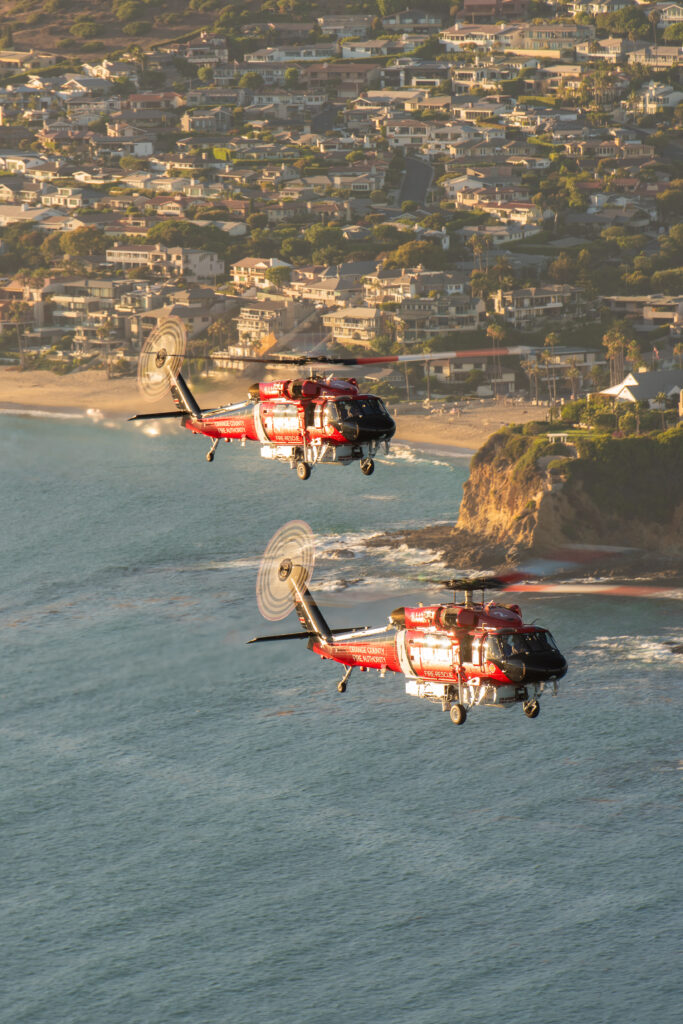
"It's obviously a much bigger, more powerful aircraft. So, the ability to have dual engines, which can fly on one engine if needed, is substantial. Yes, the 412 has dual engines, but the capability on one engine (in the 412) is not the same as the Firehawk. The difference of flying with one engine on the Firehawk versus getting you back to safety. So that part is huge, if heaven forbid you were to have a crash landing, not being on skids, but being on wheels that are on suspension gives you more survivability with impact if you have a hard landing," said Chief Pilot Cody Hamann.
"It's fantastic. It can carry more water and put more fire out, but it's a much bigger, safer aircraft. They are proven and tested in battle; that's why the military uses them because they perform very well," he continued.
The Future of the 412
While the new S-70Ms will replace the agency's primary aircraft, the Bell 412 aircraft will still play a vital role as backup aircraft in the fleet for OCFA. The agency will still rely on them to perform the same duties, keeping both in service to step in when either aircraft is in maintenance or used for training missions as needed where the larger aircraft isn't required.
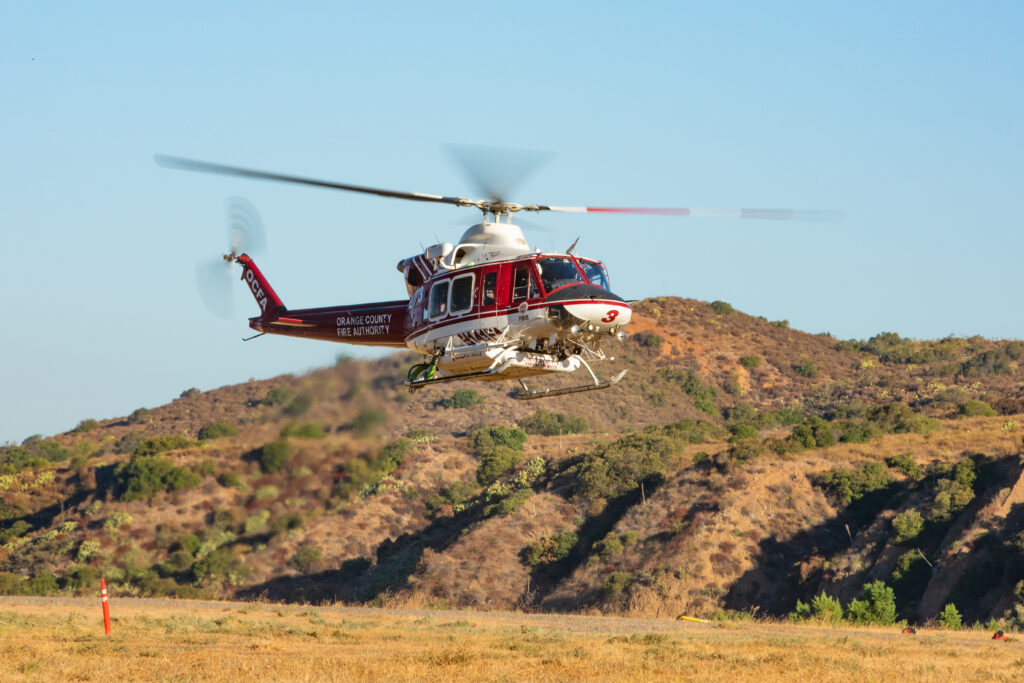
Safety
Adapting pilot training and maintenance to a whole new airframe has been a challenge for the crews at OCFA, who have taken an entirely different approach to the safety of the unit and the new aircraft.
The agency has a robust SMS program built up over the last several years as new chief pilot Cody Hamann has taken the reigns. This program has now been adapted to include the complexities of the newer aircraft. In addition, a complete risk assessment is done prior to any mission undertaken by the unit.
"I've only been in this position for a couple years now as chief pilot, and we've seen that SMS system definitely improve over the years, if you think back to the inception of air ops in Orange County, it was contract pilots from Evergreen that became full time employees here" said Hamann.
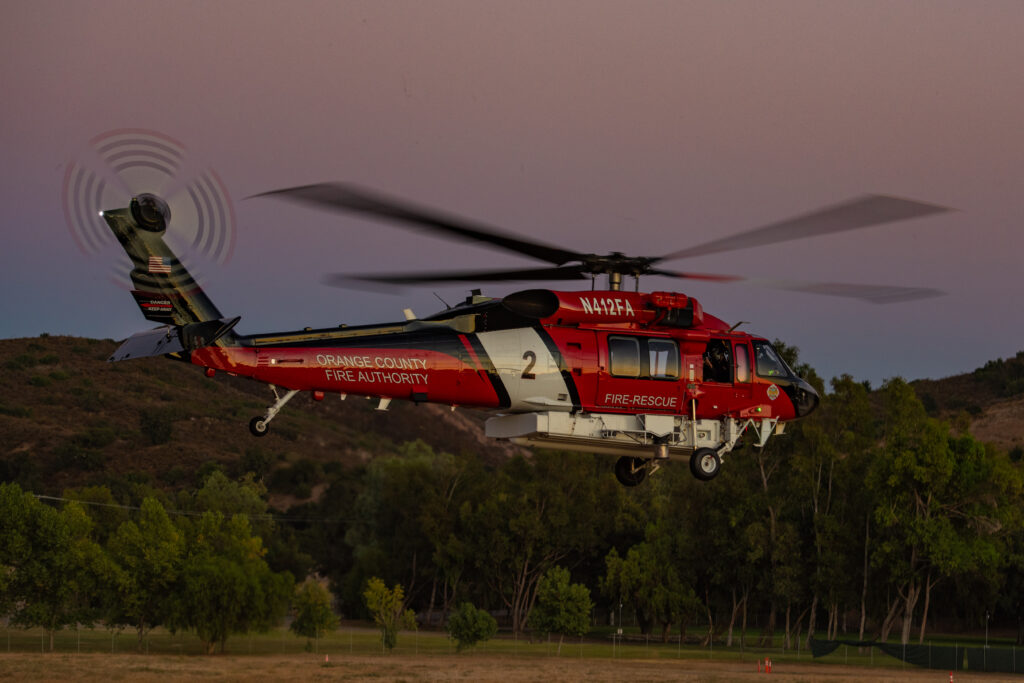
"I've been here for eight years now, and it's changed drastically in that time. It went from that old guard to the new guard, where a lot of the guys here have a 135 background. We don't operate as 135, but we do some rules in the spirit of things like the evolved SMS, and we've been here. The risk assessments force us to look at certain aspects that could change how that day looks like, such as weather and crew rest. So, I picked it up a few years ago and built us a pilot standard. I adopted much of that from the 135 side," said Fire Pilot Joey Heaslet.
Crews also attribute the ease of tracking as much data as possible to their efforts to keep safety a top priority, from risk assessments to SMS and using systems like Digital Airware. These are all part of the safety systems the agency employs to ensure their operation is at the tip of the spear in safe practices.
Night Operations
There is a saying that was repeated several times during our time at OCFA: " If you can do it at night, you can do it during the day." The agency employs a "crawl, walk, run" approach to starting initial training. OCFA was one of the first agencies in the country to successfully implement night aerial firefighting operations, including filling and dropping on fires in full darkness.
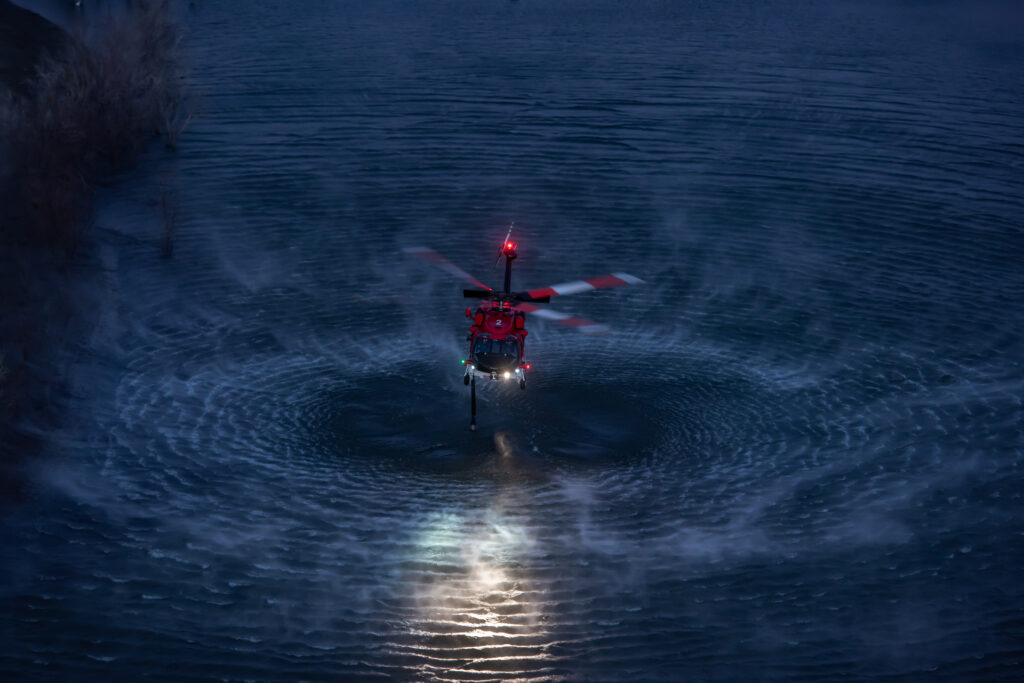
The agency's training has, since the inception of their night aerial firefighting efforts, had a large component of night operations so that crews are proficient at not only day operations but will have no hesitation at performing the same tasks at night, be it aerial firefighting or rescuing a lost climber from the side of a mountain, putting them a step above many operations that may struggle to perform night operations or to maintain currency at night.
Crews at OCFA attribute their training success to their agency administrators and, in large part, to county commissioners and the agency chief, who give them the latitude to always train as needed to ensure currency so they can provide needed services 24/7 without having to worry about any budgetary burden related to the number of flight hours allowed.
Maintenance
With four in-house maintainers, maintenance crews are kept busy with two aircraft types that need routine maintenance. Since the arrival of the new Firehawks, OCFA maintainers have been learning the new aircraft. OCFA also has a total assurance program through Sikorsky for the Firehawk that has been allocated at 200 hours per year for each aircraft, which staff believe they will hit this year thanks to all of the training and currency being performed in the first year, which will then be reevaluated after the first year to see where the agency sits after the first calendar year of operations.
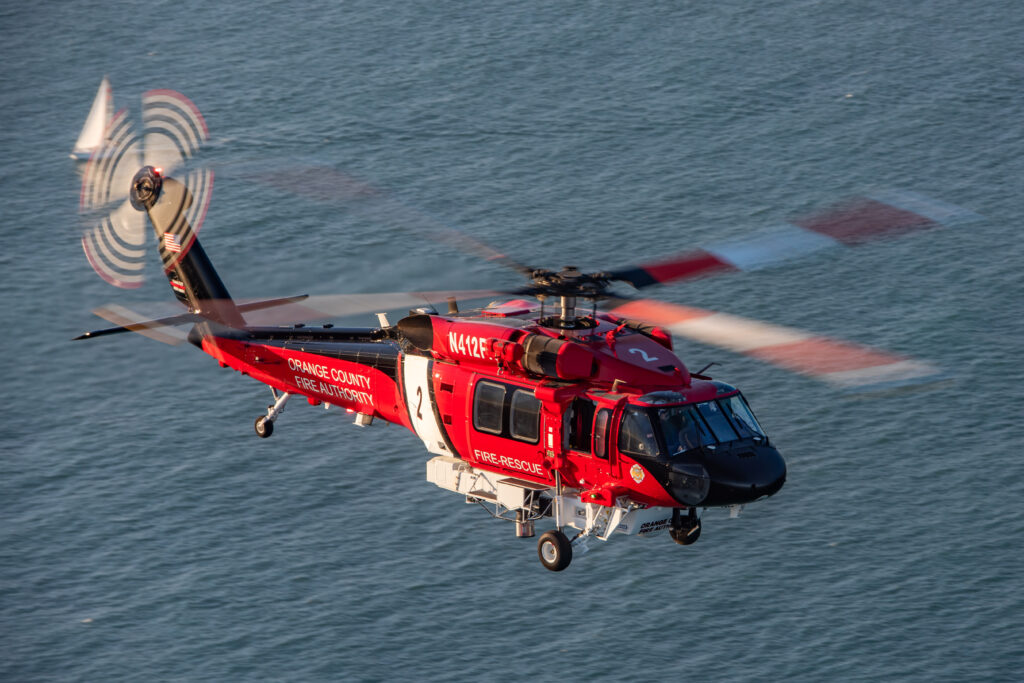
Building to Spec
As with training hours, the staff at the air unit can't thank the county and agency administration enough for planning the aircraft. "They really gave us the keys to building this aircraft the right way," said Heaslet.
And by the right way, the unit put more thought into the makeup of the aircraft than many would, not solely focusing on what larger pieces of equipment were needed but also on where things were placed if they were moveable to ensure that they had an aircraft that fit their needs for years to come.

To facilitate this, OCFA staff started putting in their homework, visiting agencies like L.A County Fire Ops, San Deigo City Fire, CAL FIRE, Ventura County, and Santa Barbara County Fire, all of which have flown various previous versions of the S-70 and refurbed versions of HH-60L aircraft that United Rotorcraft fitted. At each location, staff from the unit would fly with the other agencies to see what worked with their aircraft and what didn't, in addition to meeting many hours with pilots of the other aircraft to find out what their wish list was of things they wish they had or things they wish they had done differently if they had another chance to build an aircraft again.
The result of that research was the aircraft, which has since been completed and features many new or unrealized options on previous Firehawks. It has now become the "gold standard" of what many believe should be the standard configuration of the Firehawk going forward.

The OCFA S-70M features many never-before-seen features in a Firehhawk configuration, including 800Mhz radios, fully adjustable front wigwag/pulse lighting, Aerometals particulate filters, multiple in-cockpit viewable cameras covering the belly, tail, and winch camera covering the Goodrich winch system in a top-down view that also records voice comms from the aircraft, a Shotover/Churchill ARS750 mapping system that allows crews to fly direct to incident locations without wasting time finding locations. The aircraft is also already preconfigured to accept a FLIR 380HDc camera system (although the agency is waiting on grant approval funding before acquiring it)
"So not only did we build it exactly how we wanted it and added things, but we also made it expandable, which was important for us, because you never know in this fire environment if the FIRIS aircraft could be pulled away, so we definitely made it expandable if we needed that capability," said Heaslet.
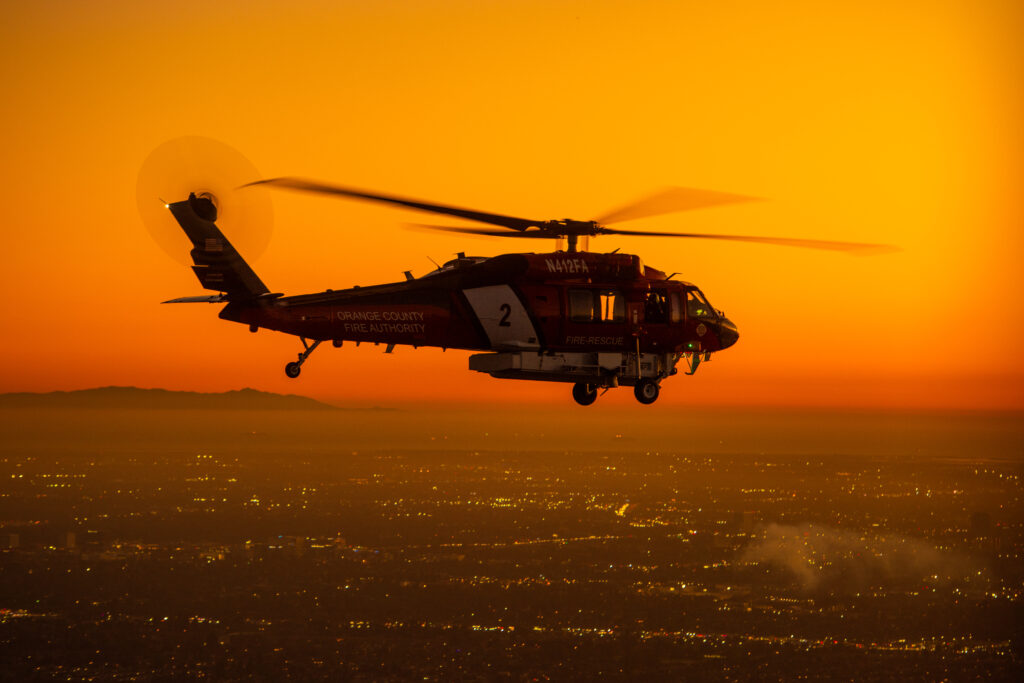
While Heaslet said that ultimately, they believe what the team at OCFA wanted and designed has become the flagship model of what a Firehawk can be, it was not without its challenges to get done. However, the team at United Rotorcraft engaged everyone they needed to get the job done specifically to what they wanted, even if it meant engineers going back to the drawing board with an original idea of theirs to make it happen.






